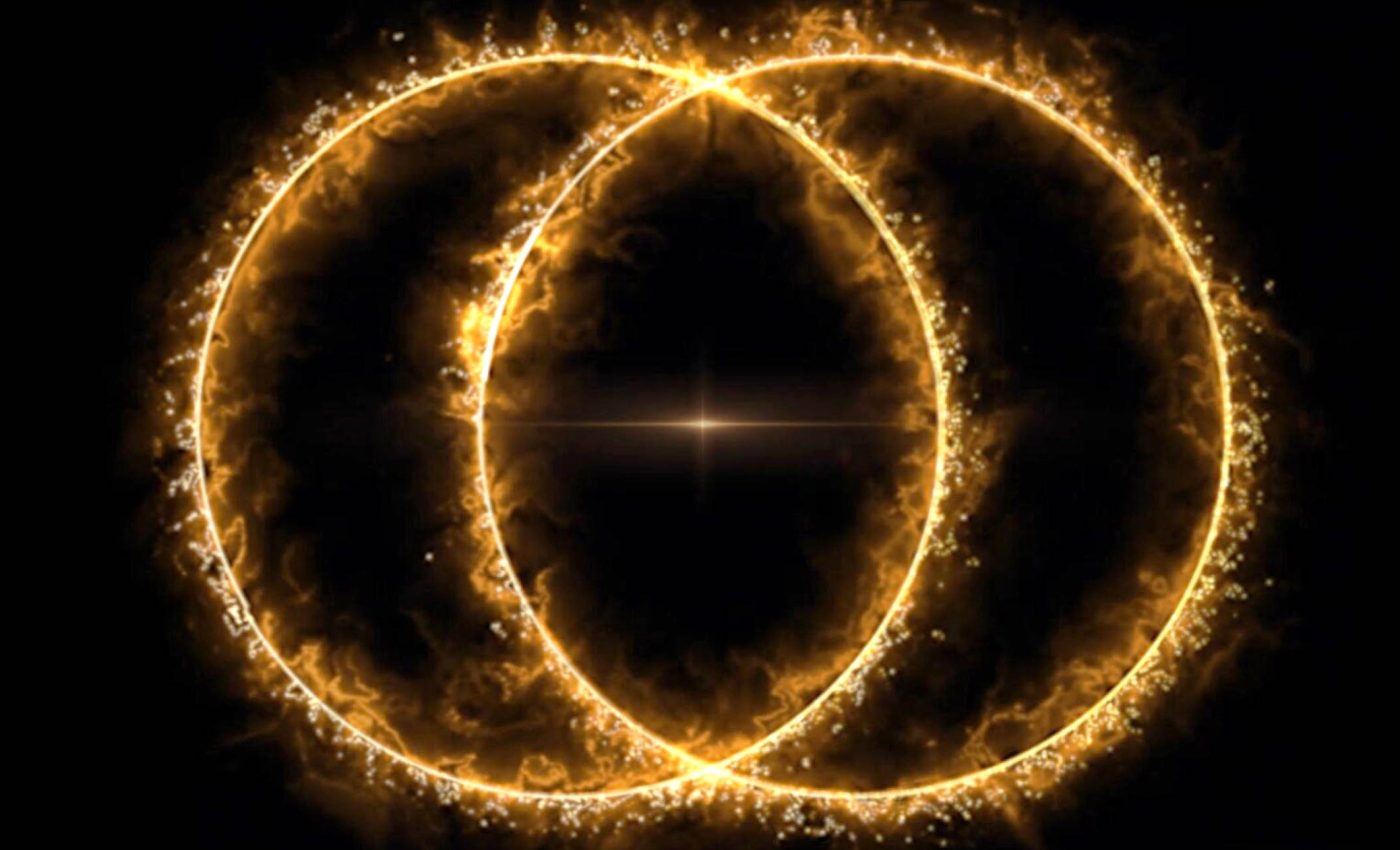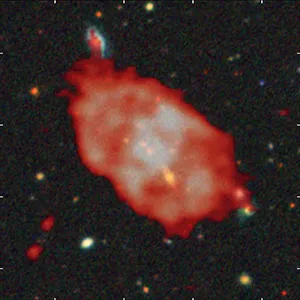
Astronomers find the most powerful "odd radio circle" ever seen
Astronomers have spotted something new out in deep space. They’re calling it an “odd radio circle,” or ORC for short, and it’s stranger than anything they expected.
Picture a faint, glowing ring of radio waves, larger than almost anything else in the cosmos, quietly sitting around a galaxy billions of light-years away.
That’s an ORC, and they just found the most distant and powerful one ever.
The thing is, ORCs didn’t even exist in our vocabulary until 2019. The first ones were found by accident. Since then, researchers have only confirmed a few of them – and every single one is a monster in size.
Most are at least 10 to 20 times bigger than our entire Milky Way galaxy. Until now, no one really knew how or why these strange rings formed. And no one expected the newest one to break all previous records.
Odd radio circle discovery
This latest discovery, named RAD J131346.9+500320, sits so far away that we’re seeing it as it was when the universe was only half as old as it is today. It also doesn’t just have one ring. It has two.
This makes it only the second ORC ever found with overlapping rings. That alone makes it rare. But there’s more.
It was found using LOFAR, a massive radio telescope made of simple antennas spread across Europe. LOFAR looks at low-frequency radio waves – signals we can’t see with our eyes but that give scientists a view of the universe from billions of years ago.
The team behind the discovery also used help from ordinary people – everyday space lovers working with the RAD@home Astronomy Collaboratory, a citizen science platform.
These volunteers weren’t just tagging along. They were a key part of the discovery.
“This work shows how professional astronomers and citizen scientists together can push the boundaries of scientific discovery,” said Dr Ananda Hota, founder of the RAD@home Astronomy Collaboratory for citizen science.
“ORCs are among the most bizarre and beautiful cosmic structures we’ve ever seen – and they may hold vital clues about how galaxies and black holes co-evolve, hand-in-hand.””
Origin of odd radio circles
At first, scientists thought ORCs might come from violent events like supermassive black holes crashing into each other, sending out giant shockwaves. That’s still on the table.
But this new study offers another possible cause: massive “superwinds” blasting out of the centers of active spiral galaxies.
These winds can come from black holes that shoot out powerful jets of charged particles. As those jets slam into the space around them, they might trigger waves that light up as giant radio rings.
What makes RAD J131346.9+500320 special is that it gives scientists a clear example of what those structures can look like – and how complex they can get.

Two more giants join the club
Alongside the double-ring ORC, the team also found two other cosmic beasts. One is a galaxy called RAD J122622.6+640622. It stretches nearly three million light-years across – that’s more than 25 times the size of our Milky Way.
This ORC also has a jet that bends sharply, as if it got knocked sideways, and then blasts out a glowing radio ring 100,000 light-years wide.
The second one, RAD J142004.0+621715, is about 1.4 million light-years across. It has a similar setup, with a radio ring at the end of one jet and another narrow jet shooting out in the opposite direction.
Both of these sit in crowded galaxy clusters, surrounded by searing hot plasma. That environment likely plays a role in bending and shaping the radio jets, which may then carve out these weird rings.
“These discoveries show that ORCs and radio rings are not isolated curiosities – they are part of a broader family of exotic plasma structures shaped by black hole jets, winds, and their environments,” explained co-author Dr Pratik Dabhade, of the National Centre for Nuclear Research in Warsaw, Poland.
“The fact that citizen scientists uncovered them highlights the continued importance of human pattern recognition, even in the age of machine learning.”
Searching for odd radio circles
For now, scientists still don’t have all the answers. But they’re getting closer. As more powerful telescopes come online – including the upcoming Square Kilometre Array – astronomers expect to find many more ORCs.
At the same time, new sky surveys like DESI and the Vera C. Rubin Observatory’s LSST will help scientists figure out where these rings live and how they change over time.
Right now, it’s clear that ORCs aren’t just one-time freak events. They may be clues to how galaxies, black holes, and the strange space between them all interact on the biggest scales imaginable.
And thanks to a mix of expert tools and curious humans, we’re getting a better view of the strange shapes hiding in the dark.
The full study was published in the journal Monthly Notices of the Royal Astronomical Society.
—–
Like what you read? Subscribe to our newsletter for engaging articles, exclusive content, and the latest updates.
Check us out on EarthSnap, a free app brought to you by Eric Ralls and Earth.com.
—–













